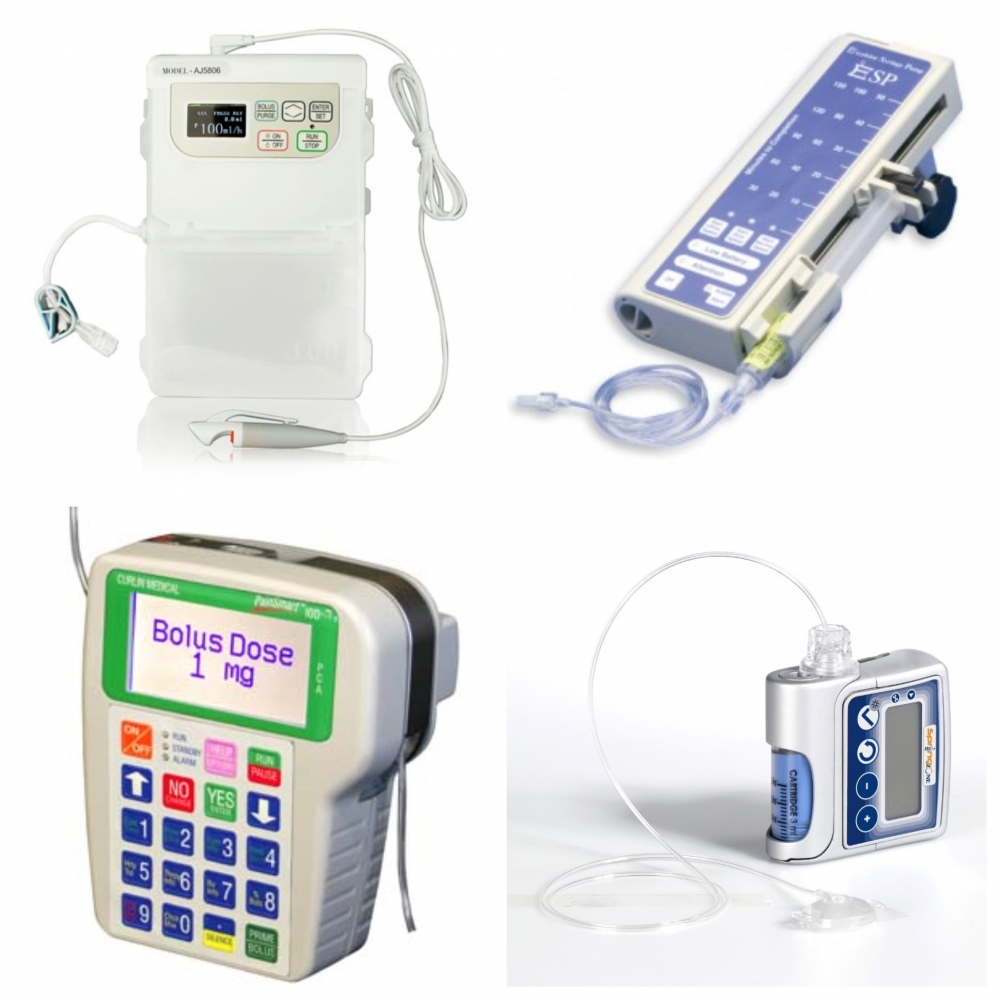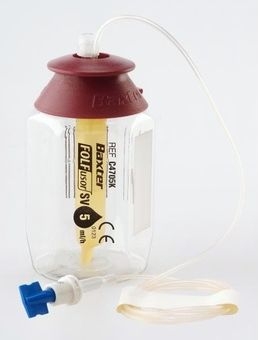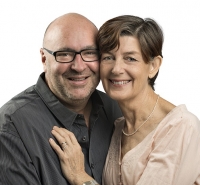And the word is....
Well done everyone. Your puzzle-solving skills far surpass my puzzle-making abilities. Yes, the word was PUMP (pool PUMP, black PUMPs, fist PUMP and PUMP iron).
I was thinking about the word pump because Sue had one fitted for 48 hours last week - and it turned out not to be at all like what we expected. The primary dictionary definition of 'pump' is a device that moves fluids (liquids or gases), or sometimes slurries, by mechanical action.
The oncologist told us that Sue was to be fitted with a pump that infused one of the chemotherapy drugs slowly over two days. A device that does that job certainly fits the definition of pump above, but we both imagined it would be something that had batteries, moving parts, buttons, maybe a readout, perhaps clicked or beeped or made the odd sound, was compact but still a bit heavy or inconvenient - all in a 'medical looking' device. I guess that we imagined something like one of these:

Imagine our surprise to discover that our imaginings were constrained by our preconceived notions about pumps in general, and our prior experience with medical pumps in particular. We learned just how wrong intelligent people can be!!
The infusion pump that Sue was fitted with was small, light, had no batteries or other power source, no buttons or screen, no moving parts, was completely silent and was disposable!! In fact, were it not for the fact that it moved fluid from inside itself to inside Sue, I would struggle to recognize it as a pump at all. Here is a picture:

It is about the size of a small baby's bottle (and looks disturbingly similar to one). The outside is hard plastic. Inside is a small 'balloon' filled with the fluid for infusion. I have two theories about how the thing works.
Theory 1
The area outside the balloon is pressurized. There is some simple, non-mechanical, mechanism for regulating the flow of fluid pushed out under pressure to 1.25ml per hour. I am guessing it is a precisely sized hole or mesh or something, but it could well be cleverer than that! Once the line is connected to the patient, the pump is 'started' by removing a cap.
Theory 2
The area outside the balloon is depressurized (a partial vacuum). Once the cap is removed, air entry is regulated by some simple device (similar to Theory 1) to 1.25ml per hour, thereby squeezing the balloon and dispensing the fluid. Once the line is connected to the patient, the pump is 'started' by removing a cap.
I like Theory 2 as it would work for fluids of different viscosity. The bottle could also be depressurized to different levels to achieve different dispensing rates. I foresee a couple of problems though - without more 'regulation' but would probably operate differently at different altitudes/air pressures. A failure of the air intake regulator would also result in the patient getting all the remaining fluid at once unless some fail-safe was included. Overall, I suspect that it is more likely to be something like Theory 1 that 'powers' the thing.
I haven't quite thought through how the unit copes with 'blood pressure' that would oppose the infusion. This is especially vexing as people have different blood pressures and there is absolutely no adjustment on the pump... Perhaps the pressures involved in the pump itself are sufficient to overcome the patient's opposing blood pressure no matter how high it is. Or maybe there is a 'double non-return valve' system that operates a bit like an airlock.....
If anyone actually KNOWS how these things work, or has a higher degree in fluid mechanics, or is just generally brilliant, creative of intuitive, could you please educate us. Thanks!
What we know is this - the pump was small, light, barely inconvenient, essentially unbreakable (though we did not test its limits), able to be worn in the shower, can be worn in an aeroplane (with a pressurized cabin), and WORKED A TREAT. This is technology at its best!
For those of you who are less interested in engineering and technology and more interested in people! - Sue is doing OK. We went to see a local GP here yesterday and brought her up to speed so she can be part of the 'southern team' caring for Sue. The doctor agreed to our request to increase the base level of Sue's pain medication as we seek a 'happy medium' that allows Sue some freedom to 'do stuff' without too much pain, but doesn't zonk her out or compromise her too significantly in other ways. We are still looking for that balance.
We continue to marvel each day at how blessed we are, and how well supported in every way. Sue is experiencing the increasing joy of finally having me do most of the domestic duties - after 35 years of trying! I have the joy of doing all them in close proximity to, and service of, the woman who I remain deeply in love with, and eternally committed to. She is undoubtedly God's gift to me. She says that she feels the same about me - but I think that is the drugs talking!!

Comments
New comment